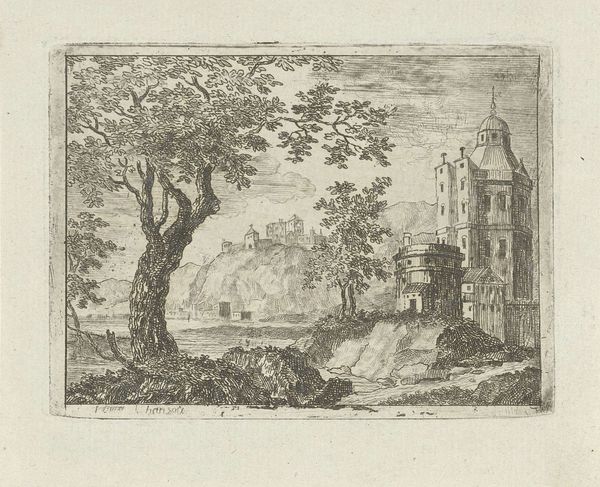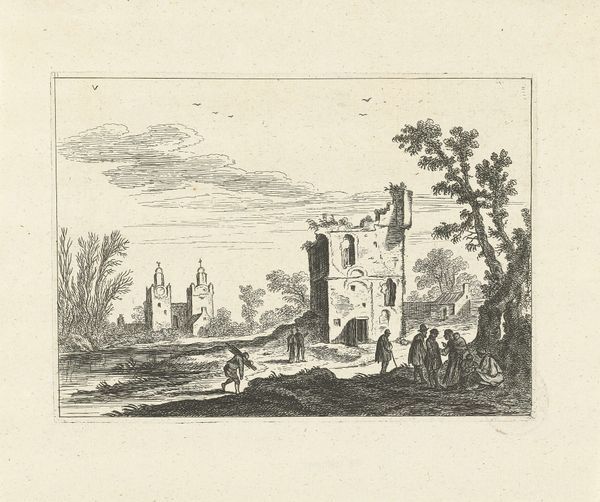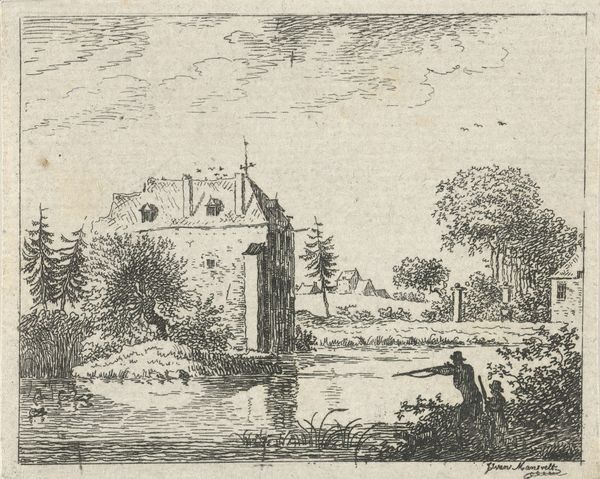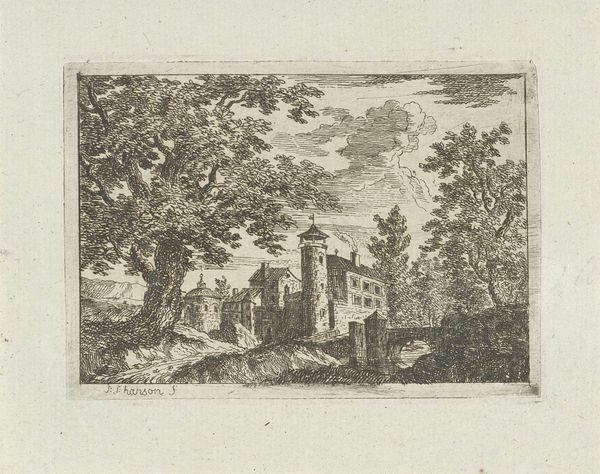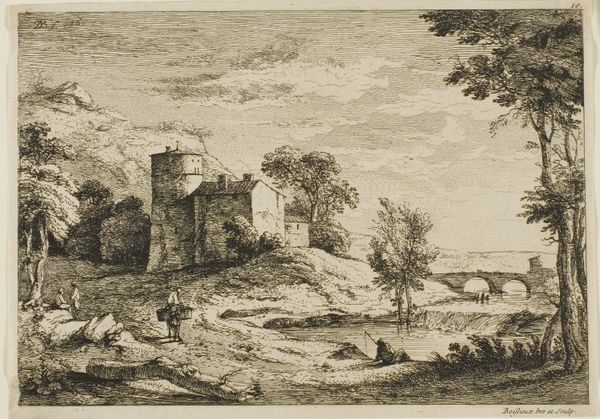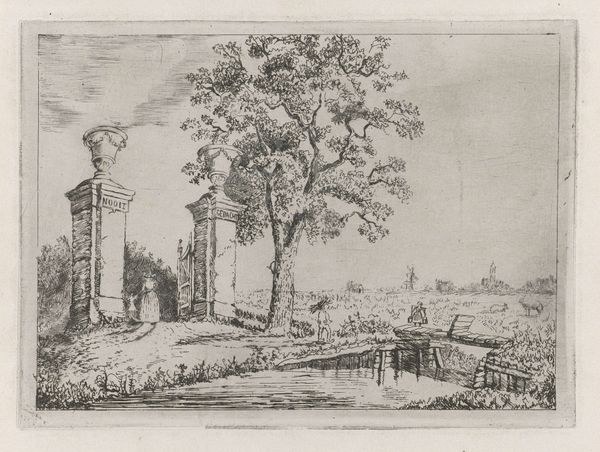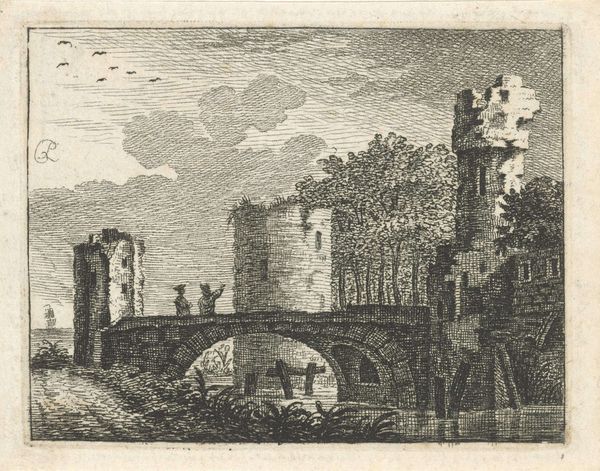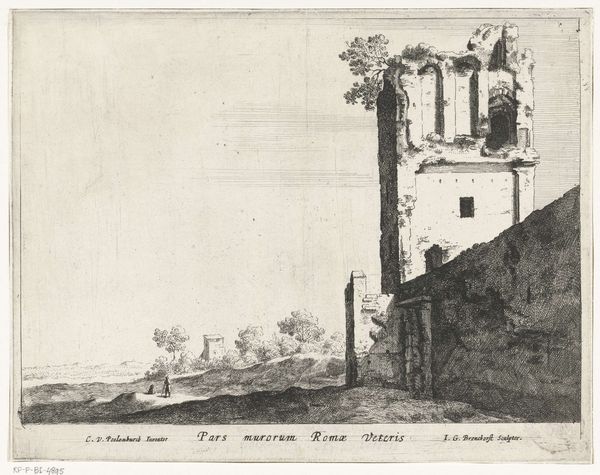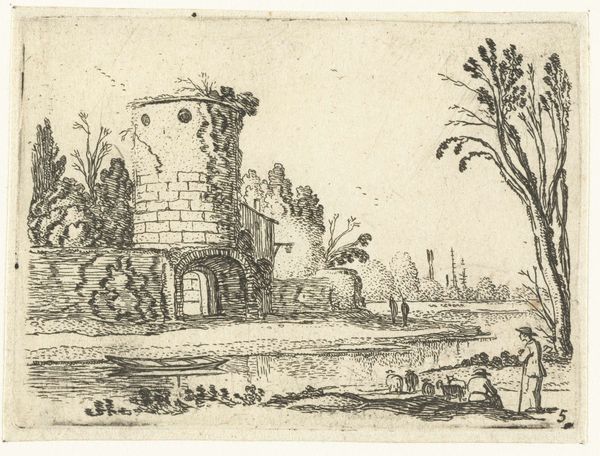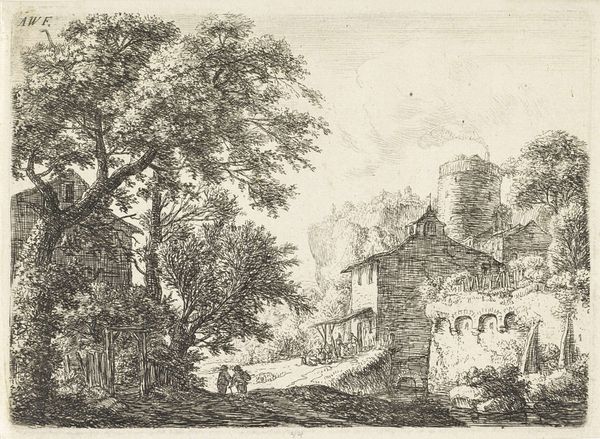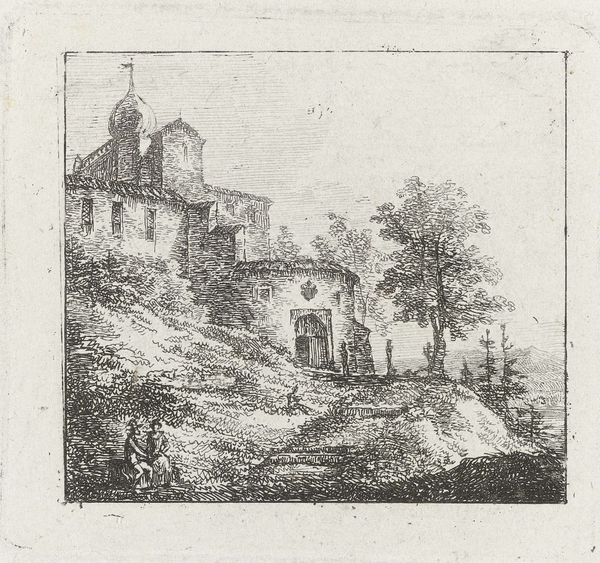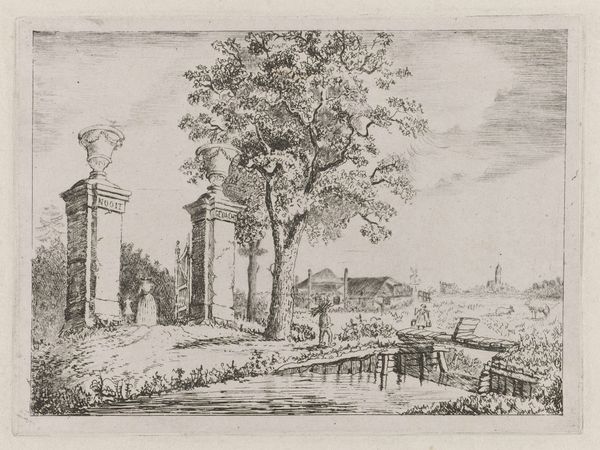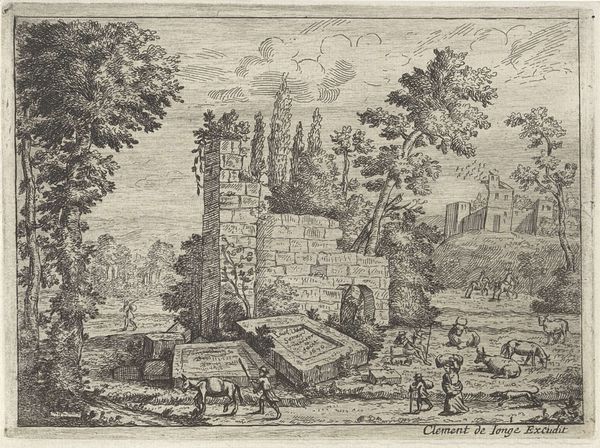
Dimensions: height 64 mm, width 86 mm
Copyright: Rijks Museum: Open Domain
Curator: Looking at this etching by Caspar Jacobsz. Philips, dating back to 1765, titled “Man en vrouw op oever,” which translates to "Man and woman on the shore," my first thought goes to the historical context of landscape as a cultural construct. Editor: The figures, partially obscured on the bank in muted earth tones, evoke in me an intense feeling of pastoral longing—a yearning for nature in an age undergoing radical transformations. Curator: Exactly, the cultural associations of land ownership in the 18th century become quite pointed given this type of scene becoming en vogue among affluent Dutchmen. What looks like mere idyllic charm is intertwined with the socio-economic history of the Netherlands. Philips capitalizes on this popular sentiment, offering scenes of serene Dutch countryside for the consumption of its wealthy inhabitants. Editor: So, Philips is cleverly using symbols of naturalness to reflect and perhaps reinforce a particular vision of Dutch society. Are there any elements of iconography in the building presented on the left side, its peculiar architecture hinting at perhaps cultural or religious concepts that Philips subtly includes here? Curator: Iconographically, the ruin situated to the left carries layers of meaning. Decaying architectural structures often act as vanitas symbols: constant reminders of mortality and the ephemerality of even grand human endeavours. The landscape serves a moral and didactic function as much as it is aesthetic. Editor: In what ways were pieces like this collected, viewed, and integrated into daily Dutch life at the time of its creation? Was it common to include the print as part of social, public conversations in local coffee shops, to make a bold personal statement hanging on a parlor wall or study space, perhaps signaling affiliation with the period's progressive faction? Curator: Prints like these played an integral role in constructing Dutch national identity. Circulated and viewed publicly, works like this served a form of accessible art which at times, allowed citizens outside elite social groups access to political and social concepts which defined Netherlandish culture. Editor: It becomes very fascinating when you consider it as a visual touchstone for discussions of Dutch culture, identity and its transformation, its ability to reach multiple viewership demographics by operating at that scale of reproducibility and accessibility. Curator: The narrative behind landscape becomes as vital as the actual landscape shown, and Philips understands this intersection, consciously producing works rooted within Holland’s self-image at this specific point in time. Editor: Examining that bridge of representation with the building of national identity really brings additional significance to how we see ourselves reflected back through artworks like these today.
Comments
No comments
Be the first to comment and join the conversation on the ultimate creative platform.
